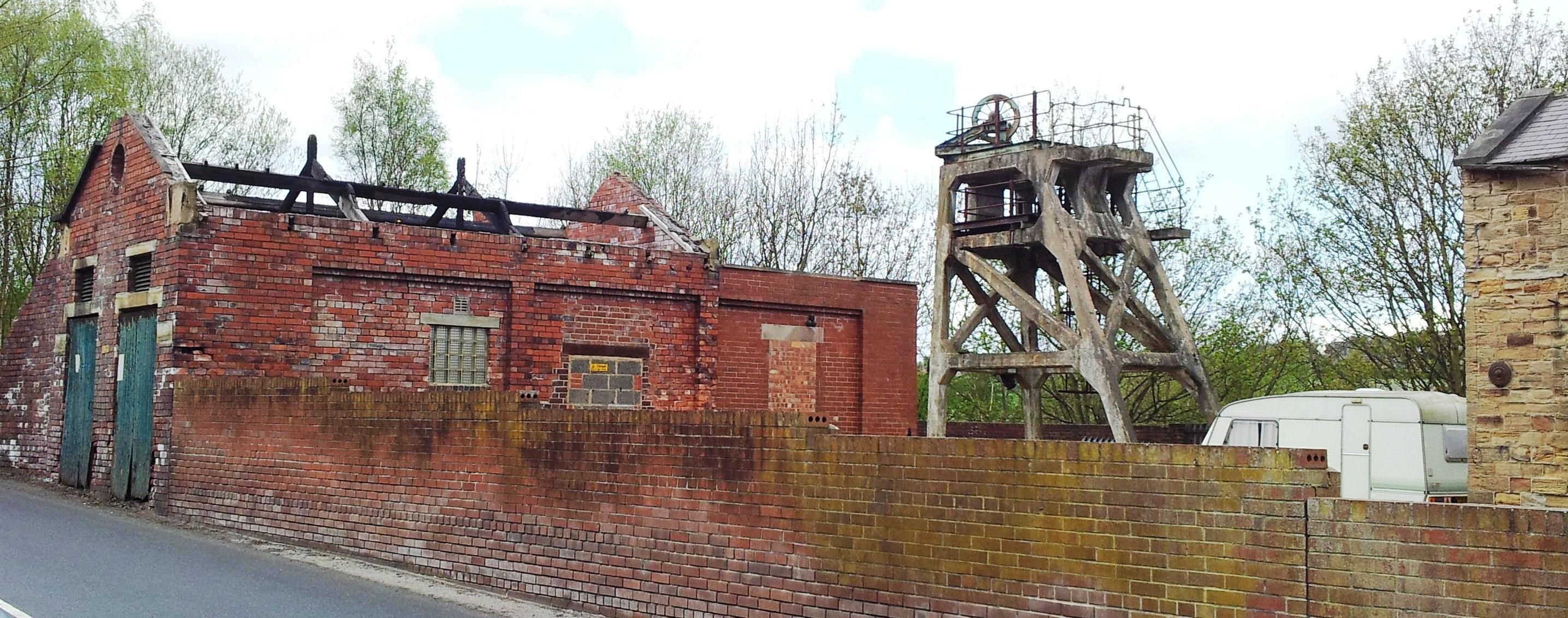
Announcement Date: May 9, 2015
SURFACE WORKING PARTY – The Friends assembled for another working party weekend, bringing tools, talent and talk of recent research, together with a hint of excitement at the prospect of uncovering more features of the industrial archaeology of the site. Site Manager Glen, and Chair of the Friends Steve opened the gates to welcome volunteers Alan, John, Keith and Phil to the pit for what would be a fascinating day.
Work began alongside the switchgear building. The last working party weekend has extended the area being cleared away from the building. This time the focus was at the northern end, closest to the head-gear and winding engine house – a spot which helpfully included a number of recalcitrant tree stumps.
Getting started under sunny skies, the volunteers encountered yet more roots clearing away the top layers of bracken, grass and weeds. Under this layer were a number of iron plates – their age and original purpose as yet unclear – but they certainly took some shifting during the morning!
This new area also started to reveal lots of coal; little pieces perhaps, but a distinct concentration, and a feature of the ground at that end of the strip. The casual reader may well think: coal in a colliery, surely not!? but in fact these ‘black diamonds’ are rather more scarce than you would imagine.
Coal working on a commercial scale at Hemingfield ended over 95 years ago, in May 1920. At this point an abandonment plan was drawn up from the surveyed working plans and submitted to the Home Secretary – a practice which first became a legal obligation under §42 of The Coal Mines Regulation Act and Metalliferous Mines Regulation Act of 1872. The abandonment plans are now held by the Coal Authority at its headquarters in Mansfield, on behalf of the Health and Safety Executive whose Inspectorate of Mines, covering active workings, is still based in Sheffield.
For the full report please see the August 2015 newsletter

